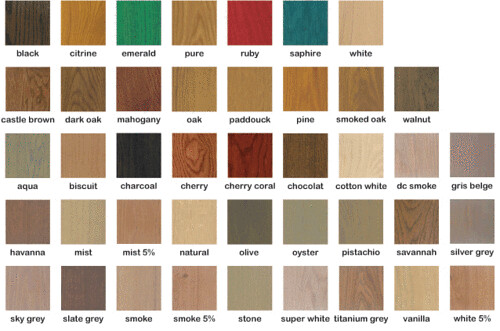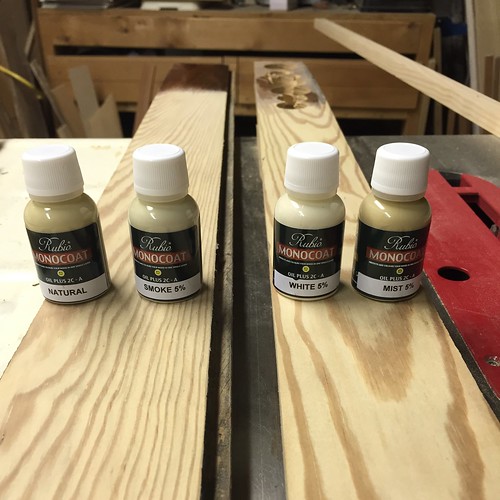We've been having a few heated debates in our home, and one of them involves something that looks a little bit too orange and yellow. Thankfully, I'm not talking about Donald Trump's skin and hair.
Our debates are not of the GOP variety, but rather about our various options for refinishing our antique pine floors. We've been looking at our various options for breathing a little life into these beautiful floors pretty much since we bought the house almost exactly a year ago. But the actual job of refinishing the floors has had to wait due in equal parts to the HVAC/plumbing disaster back in February, and to our inability to make a final decision.
The floors in our new house are beautiful antique flat sawn random width clear pine. They appear to be a mixture of heart and southern yellow pine, and almost all of it, save for a few areas of repair patches, are original to the home.
While we both quickly agreed that we didn't want to do the good old stain and poly refinish route, given that our floors in Old Town have a much more formal look than we're going for and have really started to show their age as the poly has flaked and fractured in places, just what route we wanted to go is still up in the air.
In debate number one back in June, we shared some of our original thoughts on using the very historically traditional floor finish of Waterlox (100 year old recipe of ting oil and resin). Though the tung oil finish is historically appropriate for our 107 year old floors, the sample boards we applied it to showed us just how yellow and orange the floors would likely look. (And many of you echoed our fears in the comments.)
We're talking Trump, walking wind blown from the back nine, in Florida orange and yellow. While this is great for a lot of historic pine floors, the decor styles Wendy has been focusing on for this house is far more white and far less amber. Think lots of neutral colors with aqua accents, casual fabrics, and a number of antiques and second hand furniture thrown into the mix. So I lost debate one and we kept looking for a better solution.
After licking my wounds of failure following my test patches of Waterlox, I started researching the looks Wendy has been pinning, and some modern approaches to historic floor refinishing that might be able to achieve that look. Through all of my research the thing that I really started to understand is that there's just no single solution that will work for every floor. I now understand the most important thing about choosing a method to refinish your floor:
A floor finish should be based on the aesthetic, maintenance, and price you're comfortable with for your floors, not simply what the contractor you're hiring is most comfortable with applying. It's important to find the product you want to use first, then find the contractor that wants to work with you on the approach you're interested in. If you have a contractor that can't accommodate you, you have a contractor you don't want to work with.
So the hunt was on for a product that is what we want, and for the contractor who is expert in applying it.
I started by sanding down a few spare boards we have in order to test out various solutions I'd been researching. The board on the left is the current color of the floor, and if you look closely you can see the swirl marks and bad stain job all over the board from the last time it was refinished back in the early 1990s. It's due to be refinished again.
During my research one of the products I saw mentioned quite often is the one coat application solution of Rubio Monocoat. Knowing that photos of flooring that isn't similar to ours can't do it justice, I ordered a few of their sample applicator bottles in various colors to give it a go.
It's a single coat no VOC oil based application that can color the wood as it stains. It leaves a very matte finish and has a track record of excellent wear with no need to re-coat for as many as 20 years.
The other real draw of the Rubio product is the fact you can spot correct scratches. Since it's a single coat oil application, you just apply the finish to the floor where he scratch or damage has occurred, then wipe away the excess. The unscathed wood will not accept new oil, only the exposed fibers will grab the oil and will be treated with the product. This sounds perfect for dog nail scratches, which we're sure to have. Over time the floor builds a patina that's more akin to what you're likely see in historic floors, rather than the somewhat plastic look of traditional polyurethane.
After doing a ton of research on the many colors available, I decided on trying out "Natural" color and a few of their 5% colors, like White 5%, Smoke 5%, and Mist 5%. The idea here is to only slightly tint the wood and to allow the beauty of the wood's grain to do the real work, rather than applying the full color to mask the wood. I mean, just look at the array of colors Rubio offers.

Photo Credit: woodlife-flooring.com
As I applied the oil in sections I followed the instructions. I had high hopes this would be the silver bullet for our floor refinishing woes and that I'd be able to claim the debate crown in floor debate number two.
I'd read that the Rubio solution is great for newer wood, but the tighter grain of hard old growth wood (even old soft wood is hard), sometimes doesn't accept the oil the way it really needs to.
After applying the oil and allowing the necessary dry time we took a look at the finished results.
As I nervously unveiled it to Wendy, my heart of hearts knew it wasn't meant to be. It wasn't yellow or overly glossy like the Waterlox, and certainly didn't look plastic or glossy like stain and poly, it was simply too matte, too subtle, too murky.
I knew right away this wasn't the solution for our house. I'm sure under the right conditions, wood species, decor choices, etc. that this would be an awesome solution. But for our house I agree with Wendy, it just won't work. This sample board helped us realize that we both want something more subtle than gloss poly, but more significant than an oil/wax finish that Rubio offers. We're looking for something that's a good middle ground. Somethings juuust riiiiiight.
The good news is that I've got a good lead on another option that I'll share with you for debate number three. It's sure to be much sooner than the gap between one and two, but that's primarily because we're really moving on the floor refinishing now and want to make sure it gets done sooner than later. Who knows, maybe I'll come away from this next one victorious? But as we all know, only time will tell who happens to be leading in any given poll after each debate.

![]()
![]()